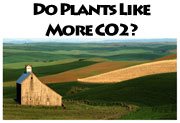| Follow @co2science |
Paper Reviewed
Yvon-Durocher, G., Allen, A.P., Cellamare, M., Dossena, M., Gaston, K.J., Leitao, M., Montoya, J.M., Reuman, D.C., Woodward, G. and Trimmer, M. 2015. Five Years of Experimental Warming Increases the Biodiversity and Productivity of Phytoplankton. PLOS Biology 13: e1002324.
Noting that "phytoplankton are key components of aquatic ecosystems, fixing CO2 from the atmosphere through photosynthesis and supporting secondary production," Yvon-Durocher et al. (2015) go on to add that "relatively little is known about how future global warming might alter their biodiversity and associated ecosystem functioning." And, therefore, they conducted a five-year-long outdoor mesocosm experiment at the Freshwater Biological Association's River Laboratory in East Stoke, Dorset, UK, which was open to natural dispersal from a regional species pool that allowed them to explore the effects of experimental warming in the context of meta-community dynamics. And what did they thereby learn?
The ten researchers report that a warming of 4°C led to (1) a 67% increase in phytoplankton species richness, (2) more evenly-distributed abundance, and (3) higher rates of gross primary productivity (see figure below). They also say that (4,5) "warming elevated productivity indirectly, by increasing the biodiversity and biomass of the local phytoplankton communities." And they further report that (6) "warming also systematically shifted the taxonomic and functional trait composition of the phytoplankton, favoring large, colonial, inedible phytoplankton taxa, suggesting stronger top-down control," which was (7) "mediated by zooplankton grazing." And in light of these several findings, Yvon-Durocher et al. ultimately conclude that (8) "temperature can modulate species coexistence, and through such mechanisms, global warming could, in some cases, increase the species richness and productivity of phytoplankton communities."

Effects of warming on phytoplankton diversity, revealing that (a) local taxon richness, (b) the Shannon-Diversity Index, and (c) total biomass were significantly elevated on average over the year in the warmed treatments. Source: Yvon-Durocher et al. (2015).




